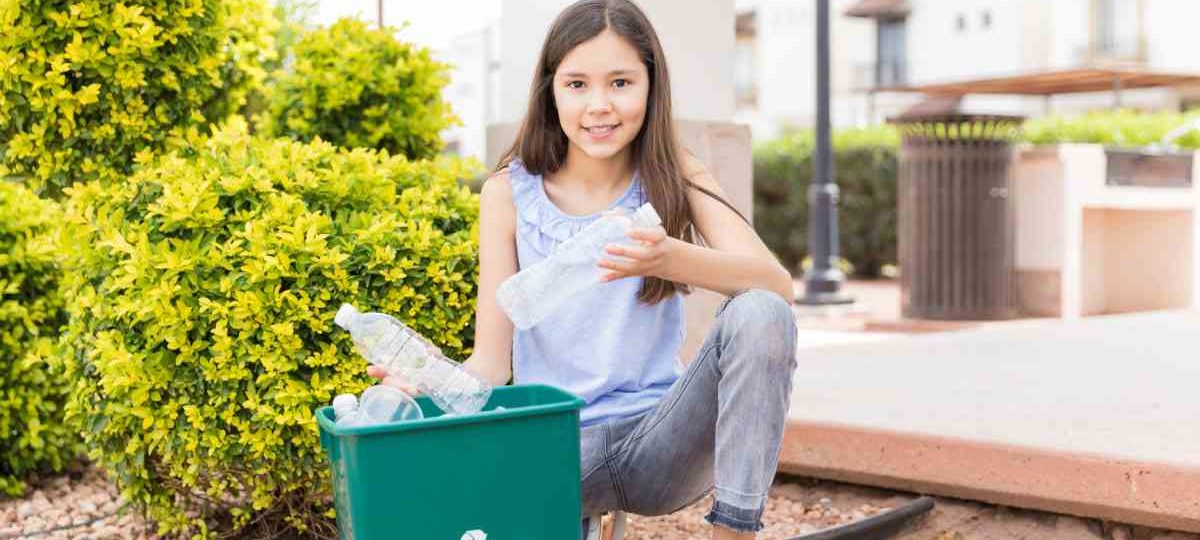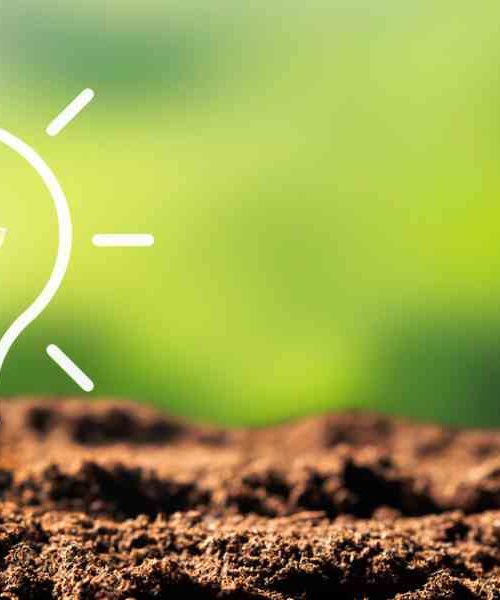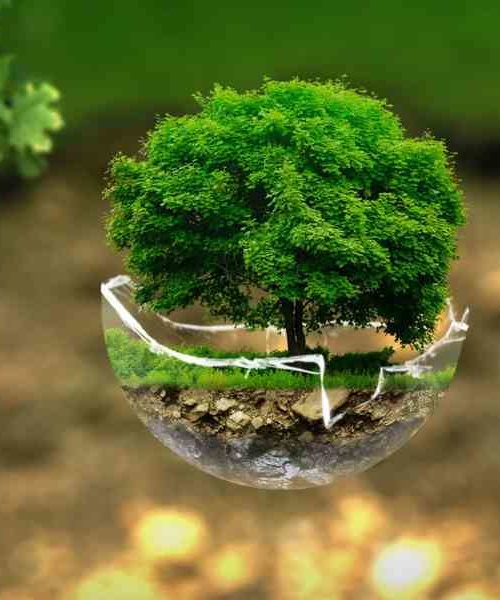Do you want to reduce your environmental footprint and help protect the planet? Do you want to make small changes in your lifestyle that can have a big impact on the environment? If so, then this blog post is for you! We’ll look at some simple ways to help the environment right from the comfort of your own home.
List of Ways How To Help Environment At Home
1. Recycle
Recycling helps reduce the amount of waste sent to landfills and incinerators, and also helps conserve natural resources.
It is one of the most important things we can do to help protect the environment. By recycling, we can reduce the amount of materials that need to be produced and reduce our dependence on raw materials. Additionally, recycling helps create jobs and strengthens the economy. It is easy to start recycling at home by separating paper, plastic, glass, and aluminum cans into separate bins and taking them to a local recycling center.
There are also many other items such as electronics, clothing, furniture, and appliances that can be recycled. By making small changes in our daily lives such as recycling more often, we can make a big difference when it comes to protecting our environment.
2. Conserve Energy
One of the most effective ways to help the environment at home is to conserve energy. There are a variety of simple and easy ways to reduce your energy consumption. Turning off the lights when leaving a room is an easy way to start saving energy.
Utilizing natural light whenever possible can also help. Additionally, thawing frozen food in the refrigerator and hanging clothes instead of using a tumble dryer will help reduce energy use. Unplugging electronics that are not being used can help as well. Taking these steps will not only reduce energy consumption but also help lower your utility bills.
3. Conserve Water
Conserving water is an important part of protecting the environment. To conserve water, start by turning off the faucet when washing your hands and switch to a low-flow shower head.
You can also prefer to use the shower instead of a bath, hold off on overflowing taps and close the tap while brushing your teeth. Installing water-saving devices like dual flush toilets and rainwater harvesting systems are also great ways to conserve water. Finally, be sure to check for any toilet leaks around your home as even a small leak can waste gallons of water a day.
4. Source Locally
When it comes to helping the environment, sourcing locally is a great way to reduce your carbon footprint. Shopping locally helps reduce the amount of energy used to transport goods and reduces pollution from vehicles.
By purchasing locally sourced food, you can also help support the local economy and help keep farmers in business. Additionally, buying local produce often means fresher food, which can help reduce food waste. So the next time you go grocery shopping, look for locally-sourced items!
5. Reduce Food Waste
Reducing food waste is a great way to help the environment from the comfort of your own home. There are many simple things you can do to reduce your food waste, such as taking an inventory of what you have in your pantry and making a meal plan, so you only buy what you need.
You can also pickle, dry, can, ferment, freeze and cure foods to make them last longer. Additionally, buying locally-sourced food and growing your own food are both excellent ways to reduce food waste and help the environment. Furthermore, educating others about the importance of protecting the environment is a great way to spread awareness about how much food waste affects our planet.
By making simple changes in your lifestyle, you can easily help make an impact on the environment.
6. Choose Sustainable Products
Choosing sustainable products is an important way to help the environment. Sustainable materials are those that are harvested, manufactured, and disposed of in ways that minimize negative environmental impacts.
By selecting sustainable products, you can reduce the amount of pollution, conserve resources, and reduce waste. Consider buying items made from recycled materials or that are energy efficient.
You can also find items made from natural materials like organic cotton or bamboo. Additionally, look for products that have minimal packaging and can be easily reused or recycled. Taking the time to purchase environmentally-friendly products can make a positive difference for the environment.
7. Eat Less Beef and Pork
One of the most impactful ways to help the environment is to reduce our consumption of beef and pork.
Eating less red meat decreases our collective greenhouse gas emissions significantly, as livestock production is one of the leading sources of global warming. Not only that, but consuming fewer animal products can also lead to reduced water usage and pollution. Making a conscious effort to reduce beef and pork consumption in your diet is one of the most effective and doable ways to help the environment right at home.
8. Unplug Electronics
Unplugging electronics when they are not in use is a simple and effective way to reduce energy consumption and help protect the environment. By unplugging any appliances, gadgets or devices that are not being used, it can help save energy and money, as well as reduce your carbon footprint.
Using power strips around the home can make it easy to turn off all electronics with one tug of the strip. Additionally, unplugging electronics also helps to prevent phantom electricity consumption that can silently run up your electricity bill. Taking these simple steps can make a big difference in reducing your environmental impact.
9. Grow Your Own Food
Growing your own food is a great way to help protect the environment from the comfort of your own home. Not only does it save energy by reducing the transportation of produce, but it also reduces air and water pollution through the use of natural fertilizers, herbicides, and pesticides. Additionally, it helps minimize food waste and plastic packaging, since you can harvest only what you need. Plus, it’s a great way to get outside and enjoy some fresh air while you’re at it! All it takes is some outdoor space, seeds, water, and a little bit of time. Together, we can all join the fight against climate change by growing our own food.
10. Repurpose & Reuse
Repurposing and reusing items is a great way to help the environment. By finding creative ways to use old items, you can reduce your environmental impact and save money. For example, plastic straws can be used to organize cables, kitchen drawers can be designated for plastic bags, and products made from recycled materials should be purchased whenever possible. Additionally, try to find ways to reuse existing items in your home before buying new ones. Doing so will help reduce the burning of raw materials which in turn helps protect the environment from the damage of greenhouse gasses.
11. Use natural cleaning products
Using natural cleaning products is a great way to help protect the environment at home. These products can be used to effectively and safely clean surfaces, appliances and other items without the use of harsh chemicals.
Natural cleaning products are often composed of plant-based ingredients and are biodegradable, meaning they are not harmful to the environment.
Many natural cleaning products come in reusable containers and can be refilled with more product when needed, reducing plastic waste. Using natural cleaning products is a simple way to make a positive impact on the environment while also keeping your home clean.
12. Plant trees or a garden
Planting trees or a garden is an excellent way to help the environment at home. Trees are beneficial in many ways, such as providing shade and cooling your home, conserving water, cleaning the air and providing habitat for wildlife.
Trees also assist in reducing energy costs by blocking hot summer sun and providing windbreaks during the winter.
Planting a garden can also be beneficial; it provides healthy food to eat, absorbs carbon dioxide and produces oxygen. Gardening is also a great way to get outdoors, get some exercise and be more self-sufficient.
13. Buy locally-sourced food
Buying locally sourced food is an easy way to help the environment. Not only does it reduce food miles and greenhouse gas emissions, but it also helps stimulate the local economy by creating or retaining jobs. Additionally, it can help promote sustainability, as locally sourced food is usually fresher and requires fewer preservatives. Plus, it’s a great way to support local farmers and businesses, so you can feel good about your purchase. When shopping for food, look for items with labels that indicate they are grown or produced in your area or region.
You can also visit farmer’s markets or local farms to buy fresh produce and other goods directly from the source.
14. Educate others on the importance of protecting the environment
Educating others on the importance of protecting the environment is a great way to help the environment from home.
By sharing knowledge and information about environmental issues, you can encourage others to make more sustainable choices and lead by example. Through conversations, articles, seminars, and other forms of communication, you can spread awareness and make a positive impact. It’s also important to reach out to youth in your community as they are the future of our planet.
By teaching them about sustainability and environmental responsibility, you can help ensure that they are making responsible decisions now and into the future.
15. Install water-saving devices
Installing water-saving devices is an easy and effective way to help protect the environment. By installing low-flow showerheads, faucet aerators, and efficient toilets, you can reduce water usage in your home without sacrificing comfort. Additionally, investing in smart irrigation systems and rainwater tanks can help you save even more water. Smart irrigation systems use sensors to detect moisture levels and adjust watering times accordingly, while rainwater tanks allow you to capture rainfall for later use. With these water-saving devices, you can help conserve an essential resource and reduce your environmental footprint.







